What Is Folded Plate | Folded Plate Structure | Folded Plate Roof Construction Details | Folded Plate Staircase | What Are Folded Plate Roofs

Table of Contents
What Is Folded Plate?
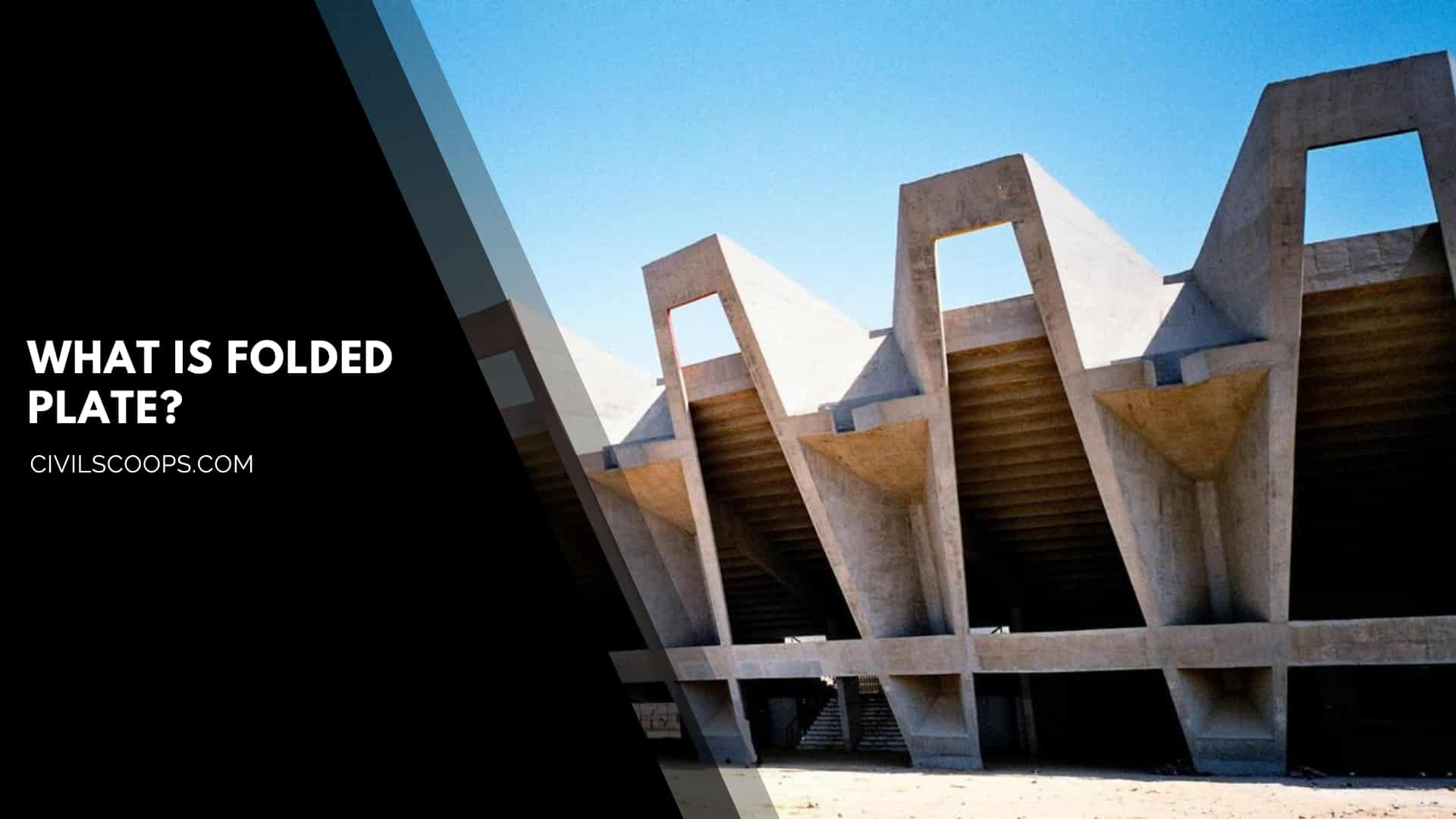
When assemblies of flat plates are rigidly connected together with each other along their edges, such setup is known as Folded Plate.
Folded Plates are connected to in such a way that the structural system is capable of carrying loads without the need of additional supporting beams along mutual edges.
The first Roof which was constructed using folded structure was prepared by the engineer eudene Freyssinet in 1923 as an aircraft hangar at Orly airport in Paris.
Folded Plate Structure:
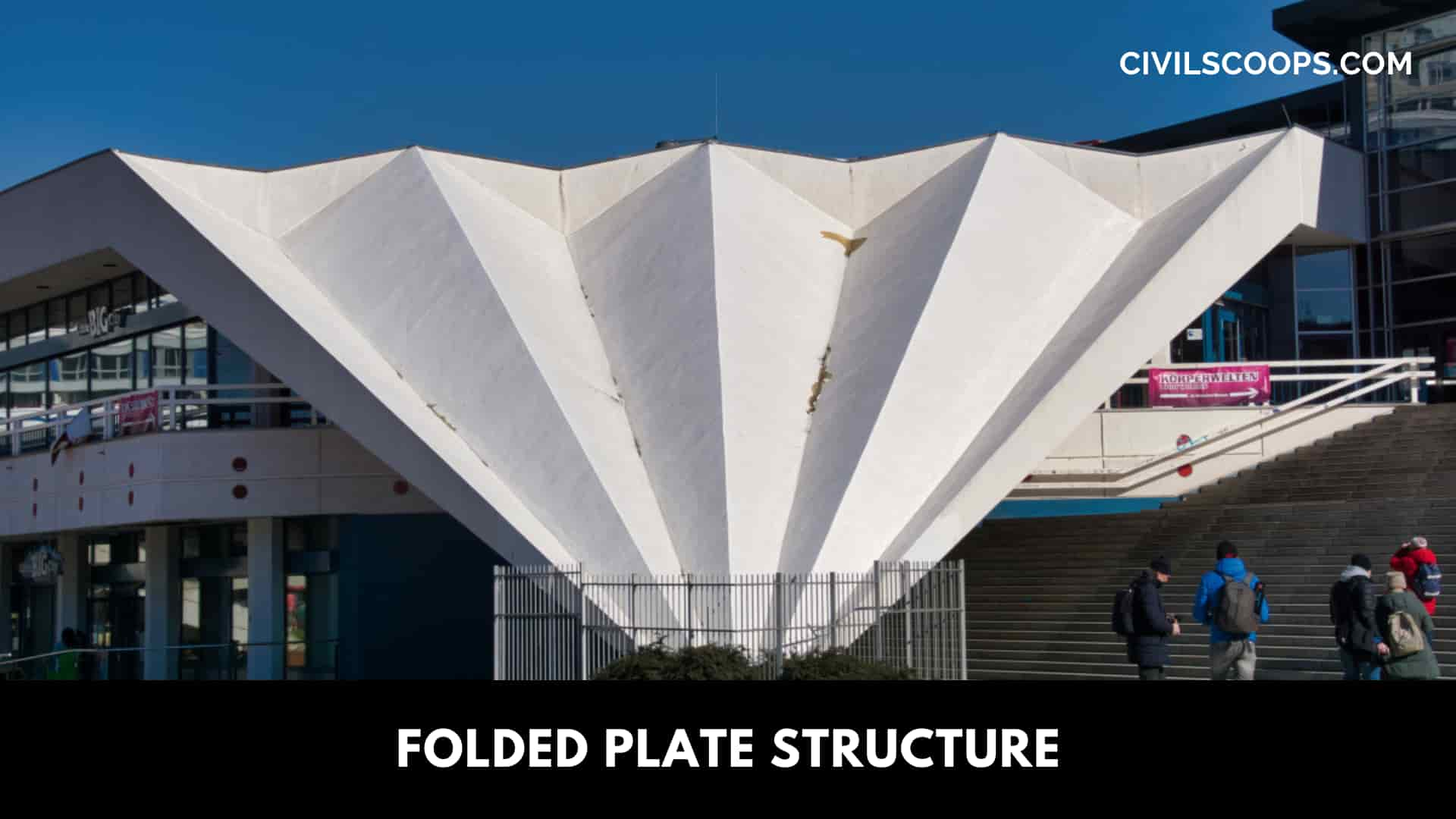
- Folded Plate Structure is those structures where flat plates or slabs are assembled in different directions and are joined together along their longitudinal edges.
- In Folded Plate Structure the structural system does not need additional supporting beams along mutual edges and is capable of carrying loads without supporting beams.
- The technique of Folded Plate Structure has originated in Germany in the 1920s. Later this technique of Folded Plate Structure became popular in Russia and The United States during the 1930s for the construction purpose of roofs of Industrial warehouses and public buildings.
- Now a day’s Folded Plate Structure is generally made up of Cast in Situ, precast reinforced concrete, or steel plates.
- Folded Plate Structure has many benefits for construction purposes.
- Firstly, the plates or slabs that are used in Folded Plate Structures are simpler to manufacture than other shells like cylindrical shells.
- Secondly, the framework requirement for Folded Plate Structures is relatively simple than other structures.
- Thirdly, fewer materials are required for the construction purpose of Folded Plate Structures; however they take more materials than curved shells if there are more bending requirements involved in the construction.
- Finally, Folded Plate Structures are economical over long spans that need to be free of internal columns as Folded Plate Structures have an intrinsic rigidity and high load-carrying capacity than other structures.
Folded Plate Roof Construction Details:

- The construction details of Folded Plate Roof are first, precast prestressed folded plate roof elements are casted on a flat surface with hinges between each panel.
- Then the Folded Plate Roof elements are transported flat and then opened to the desired angle during erection on the construction sites.
- Then the joints are connected and cast in place to unify the structure.
- This construction method and design rationale was developed in China and now being widely used in Honduras for both public buildings and industrial buildings.
Folded Plate Staircase:
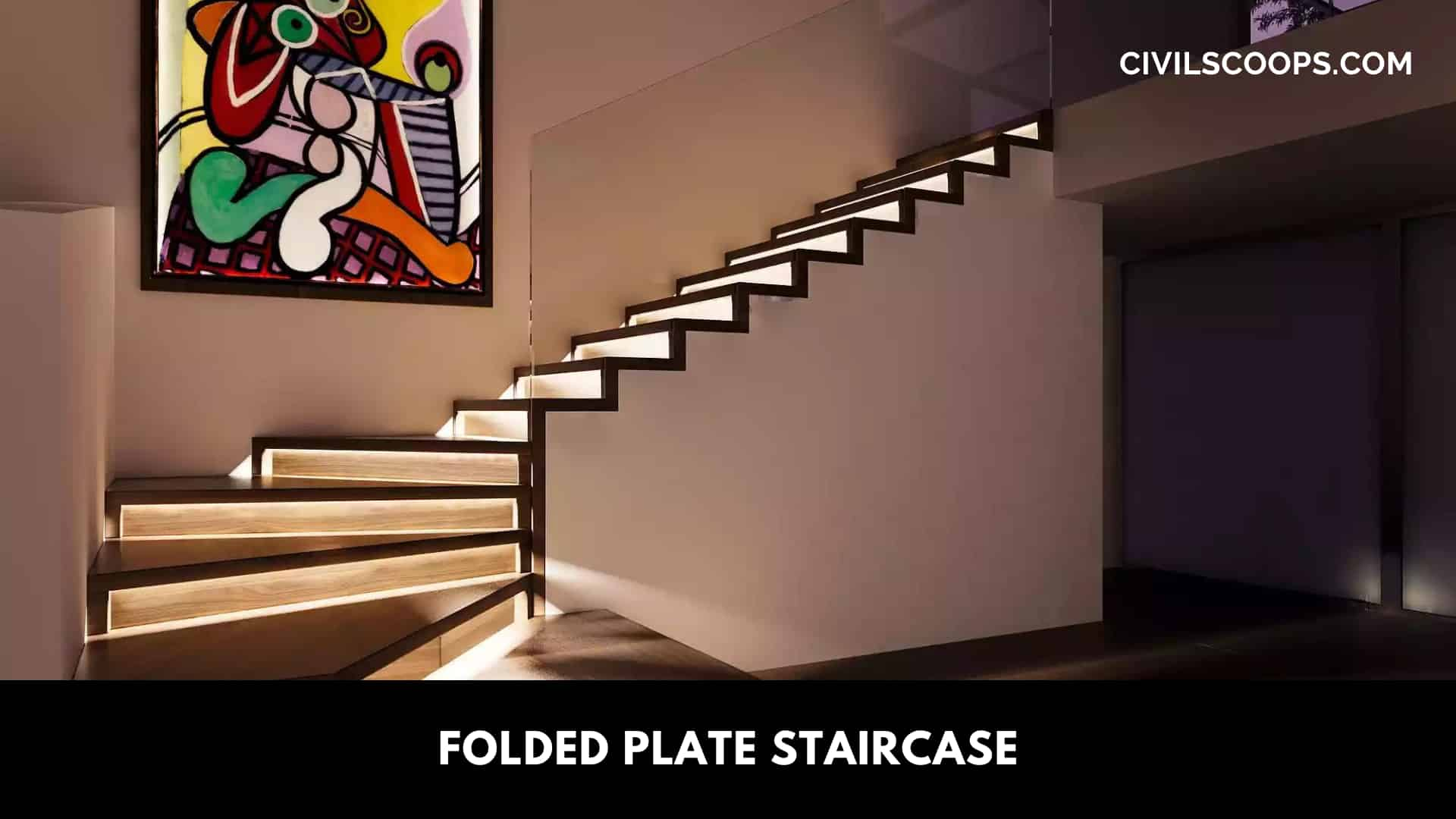
- In modern construction of buildings Folded Plate Staircase are used as they have a thin and sleek structure.
- Though Folded Plate Staircase looks good they are expensive compare to other categories of staircases due to the additional cost of centering and alignment of the framework.
- During the construction process of Folded Plate Staircase right amount of counterweight is needed for the stability of the structure.
- Now a day’s folded plate staircase runs alongside an exposed wall to connect the two floors of a building.
What Are Folded Plate Roofs?
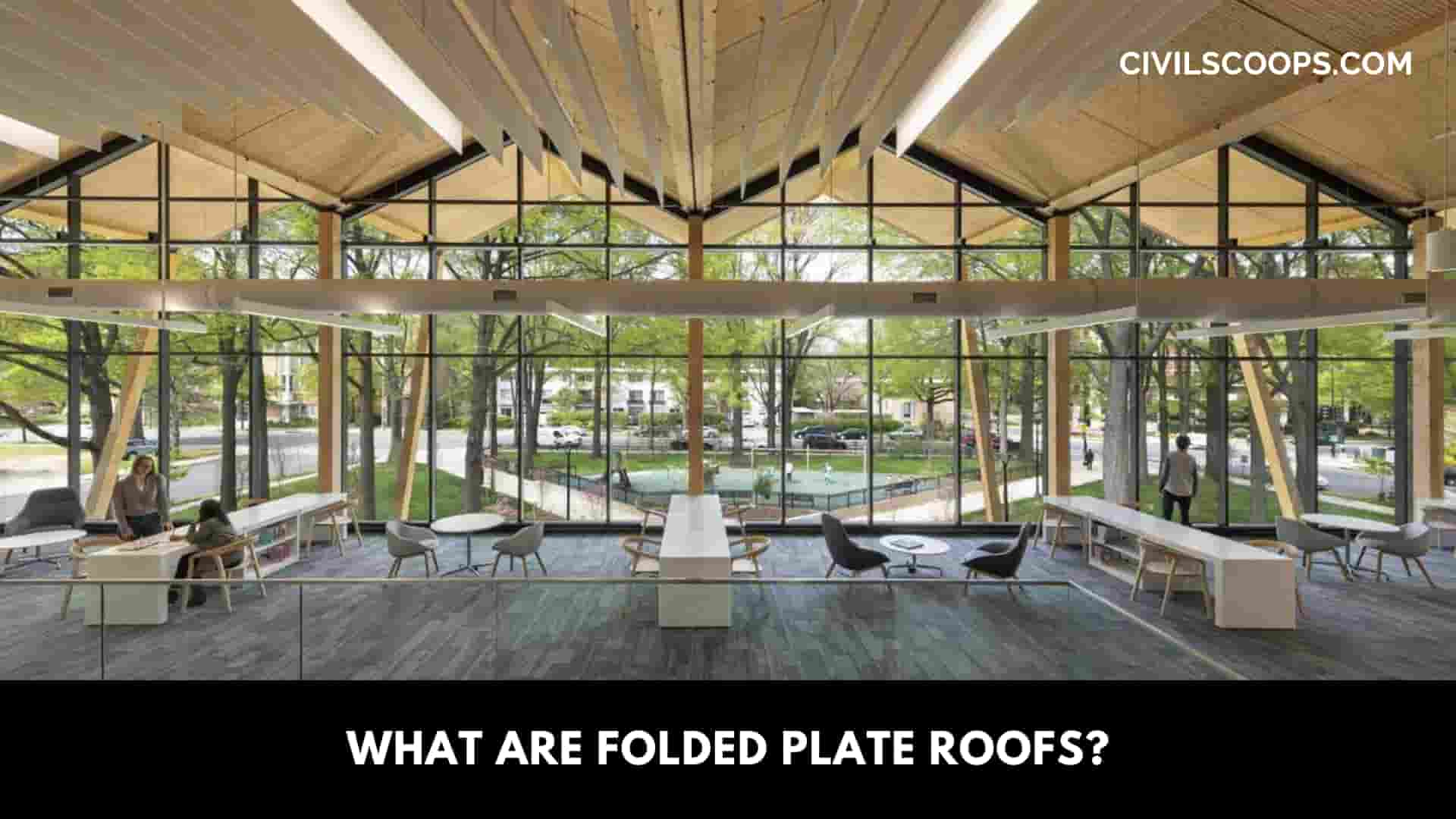
Folded Plate Roofs are a type of folded plate structure that is chosen for their durability and high weight-bearing capacity.
Folded Plate Roofs are easy to assemble as they consist of flat slabs or plates that are inclined in different directions and they are joined along their edges at the top.
In Germany in the 1920s the first Folded Plate Roofs were used in construction of mainly very large factory buildings such as coal bunkers.
In United States in the 1930s the technology of Folded Plate Roofs were used in the construction of warehouses and it quickly became the preferred roofing solution for really large commercial and industrial buildings.
Types of Folded Plate
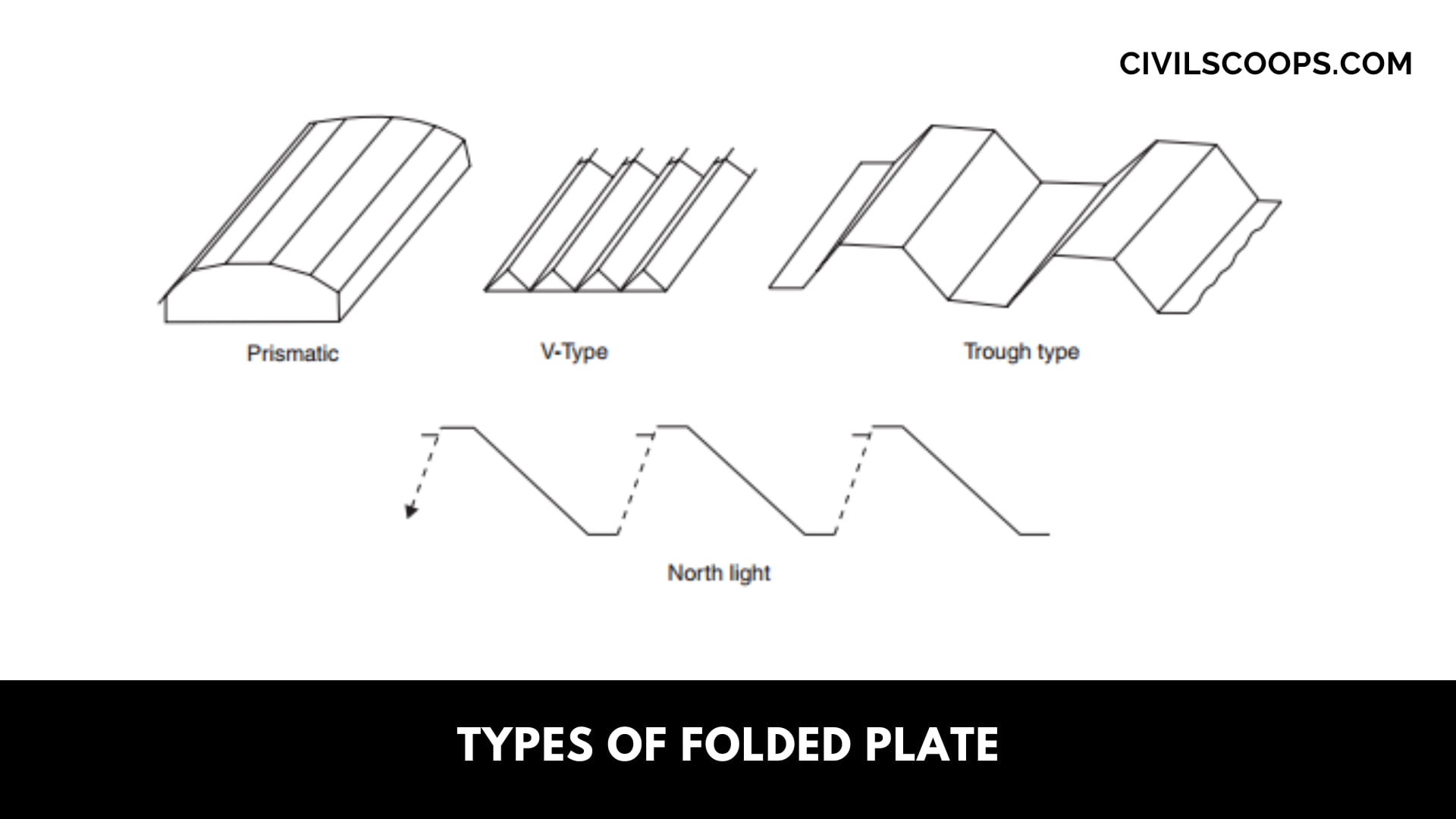
Types of Folded Plate are the following.
- Prismatic: Rectangular plates.
- Pyramidal: Non-rectangular plates.
- Prismoidal: Triangular or trapezoidal plates.
[su_box title=”Short Note” style=”default” box_color=”#333333″ title_color=”#FFFFFF” radius=”3″ class=”” id=””]
Folded Plates
Folded plates are assemblies of flat plates rigidly connected together along their edges in such a way that the structural system capable of carrying loads without the need for additional supporting beams along mutual edges.
Folded Plate Structures
Folded plate structures are assemblies of flat plates, or slabs, inclined in different directions and joined along their longitudinal edges. Modern folded plate structures are typically made of cast in situ or precast reinforced concrete, or steel plate.
Folded Plate Roofs
Folded plate roofs are roofing systems chosen for their high weight-bearing capacity and their durability. They can be best described as assemblies that consist of flat slabs or plates that are inclined in different directions and are joined along their edges at the top.
Folding Structures Architecture
Folded structures are three-dimensional structures – spatial structures and they belong to the structural systems. The term folded structure defines a folded form of construction, including structures derived from elements which form a folded structure by their mutual relationship in space.
Types of Folded Plates
- V-Shaped Plate
- Butterfly-Shaped Folding Plates
- Trough Shaped Folding Plates
- Tapered Folded Plates
- Hyped Folding Plates
Folded Plates Structures
Folded plate structures are composed of a number of flat plates connected to each other. They have many uses: in roofing of large spans in an architecturally appealing appearance; as box girders in bridges and overpasses; as bunkers in silo structures; as sheet piles.
[/su_box]
[su_box title=”FAQ” style=”default” box_color=”#333333″ title_color=”#FFFFFF” radius=”3″ class=”” id=””]
What Is Folded Plate Structure?
A folded structure is a set of flat plates that are inclined in different directions and joined along their edges at the top. This type of structure is beneficial because it’s capable of carrying loads without requiring the use of additional support beams.
Folded Plate Roof Structure
A folded plate roof is best described as an assembly of flat plates, or slabs, that are bent in different directions and joined at their longitudinal edges. The way the structural system is connected makes it capable of carrying loads without requiring the use of additional support beams.
Folded Plate Structures Architecture
Folded plate structures are assemblies of flat plates, or slabs, inclined in different directions and joined along their longitudinal edges. In this way the structural system is capable of carrying loads without the need for additional supporting beams along mutual edges.
Folded Plate Roof Construction Details
Folding plate structures are assembled using flat plates, then they are bent in different directions, and finally joined along their longitudinal edges. Modern ones are typically precast steel plates or reinforced concrete. As a shell structure, they consist of a series of thin plates, also known as hipped plates.
[/su_box]
[su_note note_color=”#F2F2F2 ” text_color=”#333333″ radius=”3″ class=”” id=””]
Like this post? Share it with your friends!
Suggested Read –
- What Is Window Glazing | Types of Window Glazing
- What Is DLC (Dry Lean Concrete) | Advantage of DLC (Dry Lean Concrete)
- What Is Linear Measurement Surveying | Types of Linear Measurement Surveying
- What Is Shotcrete | Shotcrete & Concrete | Shotcrete Technology | Types of Shotcrete Technology | Advantages of Shotcrete | Disadvantages of Shotcrete
- All About Brick Bat Coba | What Is a Brick Bat Coba | Procedure of Brick Bat Coba Waterproofing | Advantages & Disadvantage of Brick Bat Coba Waterproofing
[/su_note]
Originally posted 2023-03-27 11:51:19.
